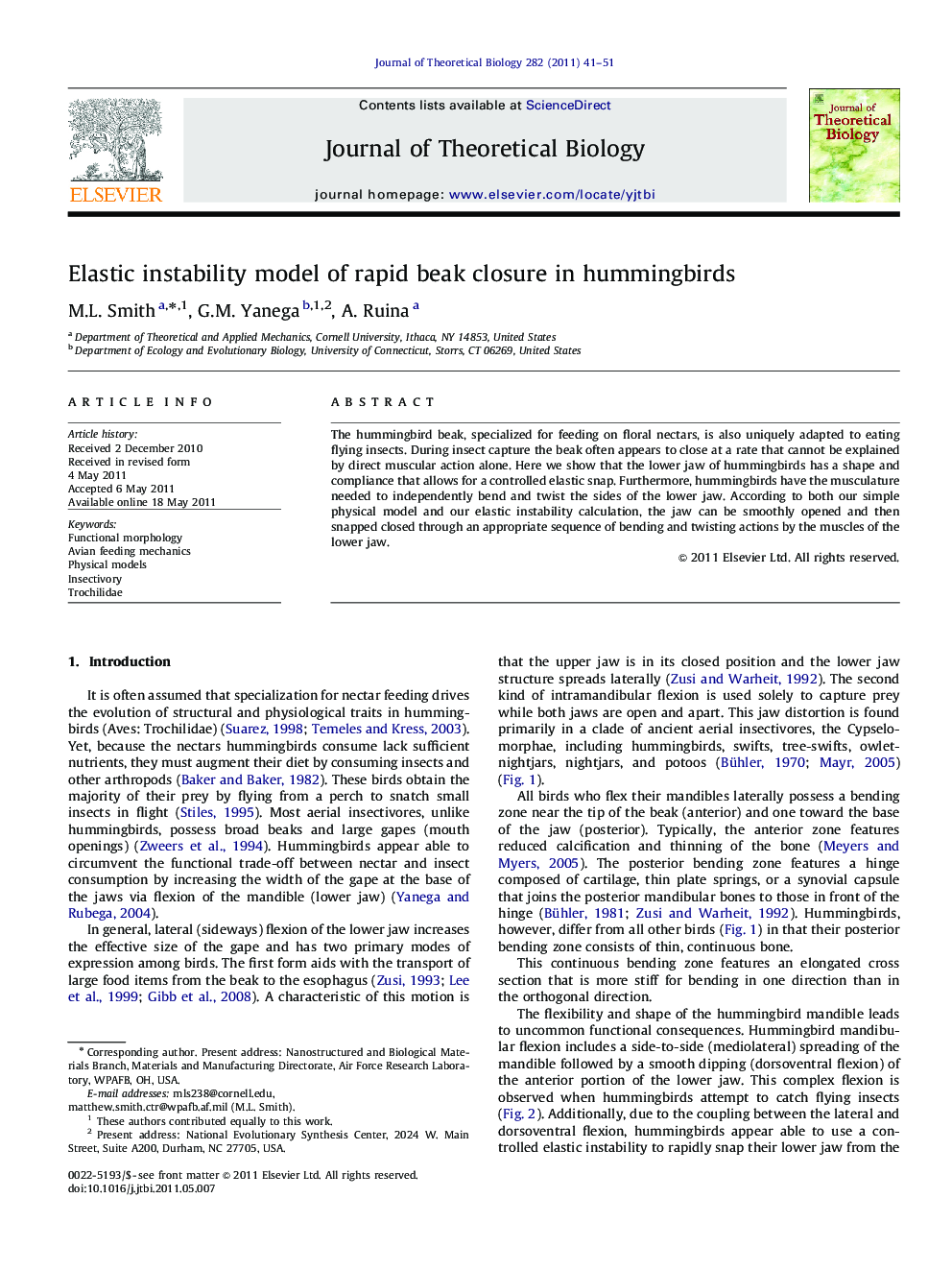| Article ID | Journal | Published Year | Pages | File Type |
|---|---|---|---|---|
| 4497027 | Journal of Theoretical Biology | 2011 | 11 Pages |
The hummingbird beak, specialized for feeding on floral nectars, is also uniquely adapted to eating flying insects. During insect capture the beak often appears to close at a rate that cannot be explained by direct muscular action alone. Here we show that the lower jaw of hummingbirds has a shape and compliance that allows for a controlled elastic snap. Furthermore, hummingbirds have the musculature needed to independently bend and twist the sides of the lower jaw. According to both our simple physical model and our elastic instability calculation, the jaw can be smoothly opened and then snapped closed through an appropriate sequence of bending and twisting actions by the muscles of the lower jaw.
► During insect capture hummingbirds flex their mandibles dorsoventrally. ► They appear to close their jaws at a rate that cannot be explained by direct muscular action alone. ► Closure was investigated using a paper model and mathematical calculations. ► We show how hummingbirds might smoothly flex and elastically snap their jaws closed. ► We discuss mandible shape and compliance and propose a driving sequence of muscular actions.
